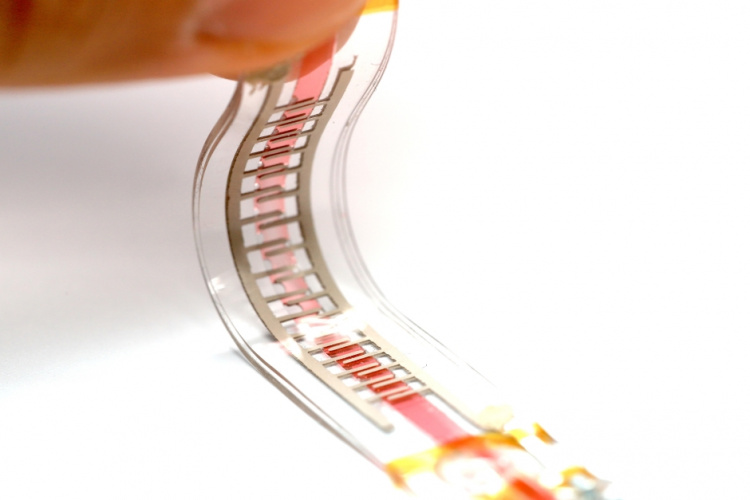Made from silicone, rubber or other stretchable polymers, soft robots are being investigated for their ability to adapt to complex environments, handle delicate objects, and interact safely with humans. As the video reveals, the team’s ultrathin fluidic actuators are being examined for use in exoskeletons that could be used for heavy lifting or rehabilitation after surgery.
Most soft robots are actuated by rigid pumps that push fluids into the machines' moving parts and because they are connected to these pumps by tubes, the robots have limited autonomy and are cumbersome to wear.
Soft robotic grabber for subs could enhance marine science
Soft robots controlled by light and magnetic field
Now, researchers in EPFL's Soft Transducers Laboratory (LMTS) and Laboratory of Intelligent Systems (LIS), in collaboration with researchers at the Shibaura Institute of Technology in Tokyo, have developed what is claimed to be the first entirely soft pump.
The lightweight pump is silent and consumes very little power, which is derived from a 2cm by 2cm circuit that includes a rechargeable battery. "If we want to actuate larger robots, we connect several pumps together," said Herbert Shea, director of LMTS. The researchers describe their work in Nature.

According to EPFL, the soft and stretchable pump is based on the physical mechanism currently used to circulate the cooling liquid in systems like supercomputers. The pump has a tube-shaped channel, 1mm in diameter, inside of which rows of electrodes are printed. The pump is filled with a dielectric liquid and when a voltage is applied, electrons move from the electrodes to the liquid, giving some of the molecules an electrical charge. These molecules are subsequently attracted to other electrodes, pulling along the rest of the fluid through the tube with them.
"We can speed up the flow by adjusting the electric field, yet it remains completely silent," said Vito Cacucciolo, a post-doc at the LMTS and the lead author of the study.
The researchers have successfully implanted their pump in a type of robotic finger widely used in soft robotics labs and are now collaborating with Koichi Suzumori's laboratory in Japan, which is developing fluid-driven artificial muscles and flexible exoskeletons.











Radio wave weapon knocks out drone swarms
Probably. A radio-controlled drone cannot be completely shielded to RF, else you´d lose the ability to control it. The fibre optical cable removes...